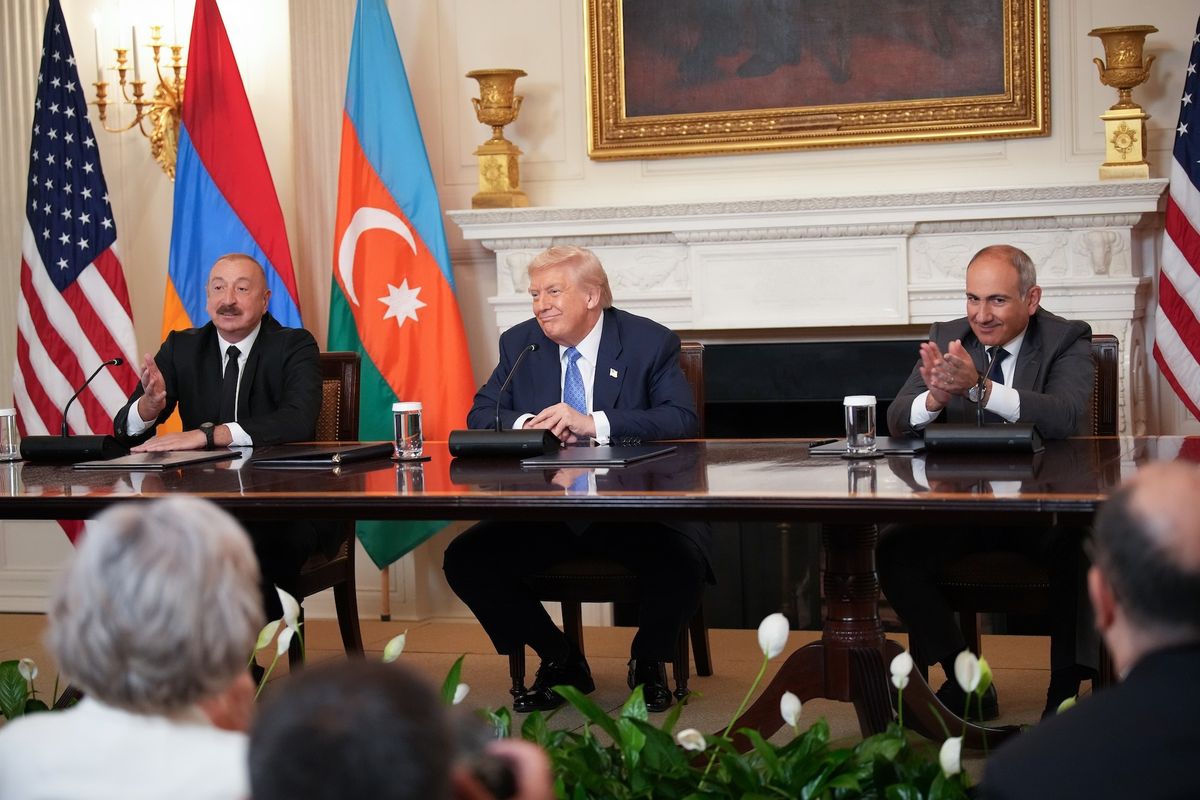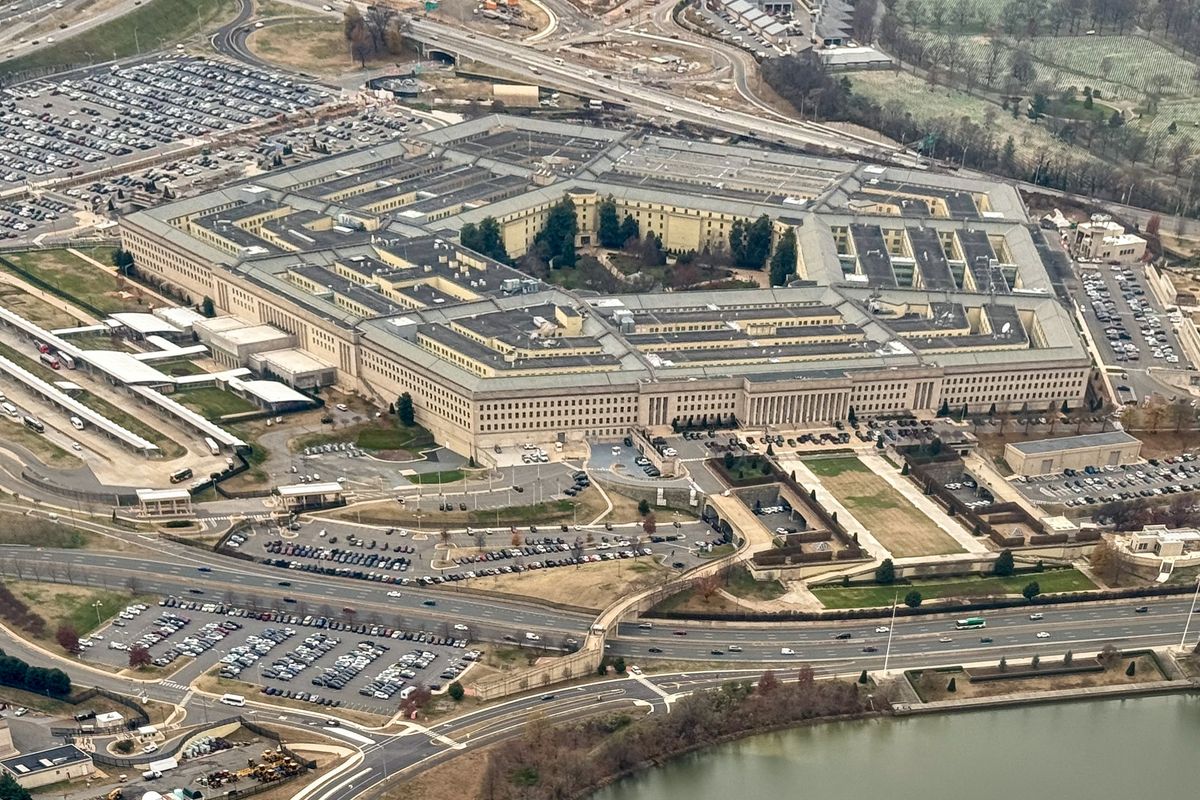President Donald Trump is considering launching air strikes on Syria, if his own tweets are to be believed – an action that could show the value of switching from U.S. ground troops to a mostly air-focused campaign that would check the already decimated ISIS but avoid the risks and costs of the pseudo nation-building some of his top officials are pushing for.
Trump last week called to immediately pull our troops out of Syria. Though that was quickly walked back by the White House, it was met by a public and private storm of protest, especially from his top national security officials who have been pushing for a military campaign that would take months more to finish, followed by a reconstruction phase.
One solution to meet the spirit of Trump’s concerns, refocus the mission on countering Iran, and get the U.S. Army out of a hopeless nation-building adventure, would be to rely mainly on air power over Syria. The U.S. could pull out most of its ground troops in the northeast over nine to 12 months, and rely on the U.S.’s local partner, the Syrian Democratic Forces (SDF), now 60,000 strong, with U.S. airpower to defend itself against ISIS remnants and Assad regime probes such as in February.
The U.S. has strategic interests in Syria, primarily to counter the threat to its allies Israel, Turkey, Jordan and the Gulf States by Iran and the Assad regime enabled by Russian President Vladimir Putin. But the 2,000 U.S. combat troops in northeastern Syria are marginal to those interests and to some degree, contradict them. Their counter-ISIS mission has evolved into a perpetual deployment machine similar to Afghanistan but with less purpose. The strategic stakes, as all America’s regional allies are telling us, are no longer about ISIS, they are about Iran, Russia, and major war or peace in the Levant.
To understand the problems with the approach that is being backed by Central Command (CENTCOM), the U.S. regional military command for the Middle East, and why a different military mission focused more on air power could make sense, our three ostensible missions in Syria should be examined critically:
Mission 1. Combat—Serious action to seize / hold territory and defeat a foe. In Syria, CENTCOM’s “Mission 1” is to "destroy" ISIS. But does that mean as a state and army, already accomplished, or all remnants?
Mission 2. Nation building / “stability ops” missions designed to transform some population's mindset and improve their lot in ways conducive to U.S. goals. This is inevitably a long term, no "end game" mission which the military either executes, or supports the State Department or local partners in doing. CENTCOM commander Votel rolled out just such a “Mission 3” concept for northeastern Syria in his April 3 U.S. Institute for Peace remarks. Iraq and Afghanistan are both examples—and cautionary tales—of our experience with such missions.
Mission 3. Presence/show of force/potential project power platform missions to shape political or military developments. Examples include the U.S. Army Sinai presence mission, and the U.S. Navy’s patrols in the Gulf. In Syria, such a mission would be to hold territory, control airspace and at least threaten a revitalized insurgency against Syrian dictator Assad, all to shape Russian and Iranian decisions. Administration officials keep citing this mission but have not turned it into an executable plan.
The problem confronting Trump is that these missions are contradictory and possibly not achievable. Mission 1 is basically done, but finishing scattered ISIS elements off is extraordinarily difficult; the U.S. with 50,000 troops did not succeed with ISIS’s precursor, Al-Qaida in Iraq, in 2009-11.
CENTCOM’s core focus appears to be Mission 2, stabilization in northeast Syria. This nation building ‘light’ rationale apparently troubled Trump. But it appeals to the military as it validates counterinsurgency doctrine, and for once, the military has worthy partners with whom they’ve established emotional bonds: the SDF’s leadership core, the PYD, which is the highly effective Kurdish offshoot of the Turkish Kurdish insurgent PKK. But such a "stability operation" by its nature is open-ended, with success uncertain.
But even if Missions 1 and 2 against ISIS could succeed, they have almost no strategic significance. ISIS still operates in other areas of Syria, and finds its adherents among the Sunni Arab population there. But only a small part of that population is in the area the U.S. controls. As the U.S. learned in Iraq—Islamic extremists go where we are not.
Ultimately, the ISIS phenomenon is a product of the misrule of the Sunni Arabs in Syria and Iraq by Iran, which allowed both Iraqi Prime Minister Nouri al-Maliki and Syrian President Bashar Assad to oppress them. Thus to stop a return of ISIS, the U.S. needs a comprehensive strategy against Iran’s hold over those states, not a camp out in northeastern Syria. Even more importantly, America’s regional allies—Turkey, Israel, Jordan and Saudi Arabia, all see fundamental threats from Iran and Russia in Syria and thus urge the U.S. to stay on in Syria to cope with them, e.g., Mission 3.
It would not be an easy mission: integrating the U.S. military presence into a political-military plan involving Turkey and Israel, both with military forces in or operating over Syria, Jordan and Gulf states, complemented by a revitalized UN political roadmap for Syria, and the withholding of international reconstruction aid until an acceptable political outcome. But except for now-former Secretary of State Rex Tillerson’s comments in January, there has been no signs of such a plan, and the Israelis, Saudis and Turks claim they have not been plugged in.
Moreover, that mission is contradicted by CENTCOM’s fixation on Missions 1 and 2 – combat and nation building. They not only divert from the bigger goal, but as CENTCOM Commander Gen. Joseph Votel repeatedly told Congress, he has no orders to counter Iran.
Finally, by partnering with the SDF and thus an offshoot of the Turkish Kurdish insurgent PKK, the U.S. collides with Turkey’s interests in countering a PKK-allied statelet in northern Syria. That tension led to the Turkish attack on the PYD in Afrin earlier this year, and currently is generating friction at Manbij, where U.S., Turkish, and PYD/SDF elements all face off. Yet without Turkey and its control of much of northwestern Syria, and its opposition to Assad and Iranian expansion, the U.S. does not have a viable Mission 3 strategy.
Moving to an airpower-focused approach, withdrawing most of our ground forces, going on the defensive against ISIS remnants, and reorienting towards Mission 3 – area denial and potential power projection— the U.S. could solve multiple problems: respond to the president’s concerns about an unending stabilization mission; calm tensions with the Turks; reduce the possibility of U.S. casualties; and focus on the above political-military strategy with allies countering the Iran-Russian alliance.
There is a powerful precedent for such a step: Operation Northern Watch over the Kurdish zone of northern Iraq from 1991-2003. The U.S. had only a minimal ground military liaison presence there; the Iraqi Kurdish Peshmerga ground forces, backed by U.S. air power, dealt well with jihadist elements and Saddam’s forces. Turkey accepted the arrangement because it did not want to see Saddam on its border (as today it does not want to see Assad back there). Turkey and the Iraqi Kurds eventually warmed to each other because, absent U.S. ground troops in the Kurds’ midst, neither side thought a Kurdish state possible. The same is possible with the Turks and Kurds in Syria.
A final advantage of air power is congressional authorization, as Congress traditionally has been much more flexible on the use of air power. The core authorization for U.S. ground troops in Syria is the 2001 counter-terror legislation passed after the attacks of 9/11, which reinforces the idea that the U.S. is in Syria only to kill terrorists.













